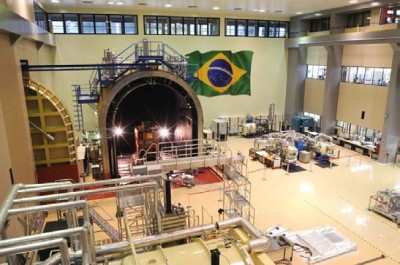Two Reports Presented To International Space University
Panel
 One of the significant annual
events at the International Space University is the Masters Final
Team Project (TP) Presentations. Each year, two teams of Master
students carry out literature surveys and critical reviews of the
subject matter as background preparation for the main Team Project
work. Drawing on this background research, students work in their
respective teams to collectively identify a focused topic for their
main study project.
One of the significant annual
events at the International Space University is the Masters Final
Team Project (TP) Presentations. Each year, two teams of Master
students carry out literature surveys and critical reviews of the
subject matter as background preparation for the main Team Project
work. Drawing on this background research, students work in their
respective teams to collectively identify a focused topic for their
main study project.
Using their imagination and initiative, the students develop
their skills to participate effectively in an international team
while working towards an innovative, focused, conceptual study, to
create a professional printed report and presentation of the
results. Throughout this conception phase, students are faced with
the task of organizing their teams effectively to carry out project
work while learning how to reach solutions in circumstances where
conflicting requirements often emerge and compromises must be
made.
This year teams presented 2 visionary Space Projects.
Kourou, a “Vision” beyond 2030
The main goal of the Vision forwarded in the project is to
inspire decision makers, active space players, and the general
public illustrating the potential of Kourou as a human-rated launch
site. The report communicates a realistic picture of Kourou by
outlining the tools, techniques, and procedures required to realize
this future. The fundamental question raised is simply: why
not?
Today’s human spaceflight market is rapidly evolving. With
the flight of the last Space Shuttle due mid 2011, the bold Chinese
entry in 2003, and the successful tests of SpaceX’s Dragon
capsule by late 2010, a decision for Europe to enter this field of
Human Space Flight is overdue. ISU students believe a progressive
approach is needed to kindle the fire and take Kourou to the next
level. The chosen decade of the 2030s is far enough to allow a
decision to take place in the next five years and implement the
expansion inside the 15-year window. It is close enough to be
realistic, and allows ambitious futuristic concepts to be
suggested. Both the commercial Human Space Flight (HSF) kick-off
estimated as early as 2015 and the long periods required to develop
HSF capabilities, further emphasize the timeliness of a European
decision.

SHINE: Space For A Health Information On Earth
Infectious diseases still present major issues in
developing countries and affect millions every year. The mortality
rate due to infectious diseases is proportional to their rate of
transmission, and it is therefore important to concentrate on the
prevention and monitoring of these diseases. The SHINE Roadmap was
developed to evaluate the current and possible future global health
scenarios and identify what technologies exist to aid global health
initiatives with an outlook towards 2030. Notably, it shows how
space-based technologies can complement other resources in the
e-Health industry and how information and communication
technologies can maximize the accessibility to information provided
by these technologies. The SHINE Web Platform was designed to fill
gaps identified in the SHINE Roadmap, and tie together existing
health monitoring information into an intuitive database. This
database allows users to link diseases and their environmental
indicators to satellite instrumentation and data providers able to
provide the necessary remote sensing data and analysis.
On May 12th, ISU Master Students presented their projects in
front of an academic panel composed of the ISU Dean and faculty.
Professor Nikolai Tolyarenko, Director of ISU’s Masters
Programs was chairing the session.
 ANN's Daily Aero-Term (04.26.24): DETRESFA (Distress Phrase)
ANN's Daily Aero-Term (04.26.24): DETRESFA (Distress Phrase) ANN's Daily Aero-Linx (04.26.24)
ANN's Daily Aero-Linx (04.26.24) Airborne 04.22.24: Rotor X Worsens, Airport Fees 4 FNB?, USMC Drone Pilot
Airborne 04.22.24: Rotor X Worsens, Airport Fees 4 FNB?, USMC Drone Pilot Airborne 04.24.24: INTEGRAL E, Elixir USA, M700 RVSM
Airborne 04.24.24: INTEGRAL E, Elixir USA, M700 RVSM Airborne-NextGen 04.23.24: UAVOS UVH 170, magni650 Engine, World eVTOL Directory
Airborne-NextGen 04.23.24: UAVOS UVH 170, magni650 Engine, World eVTOL Directory




